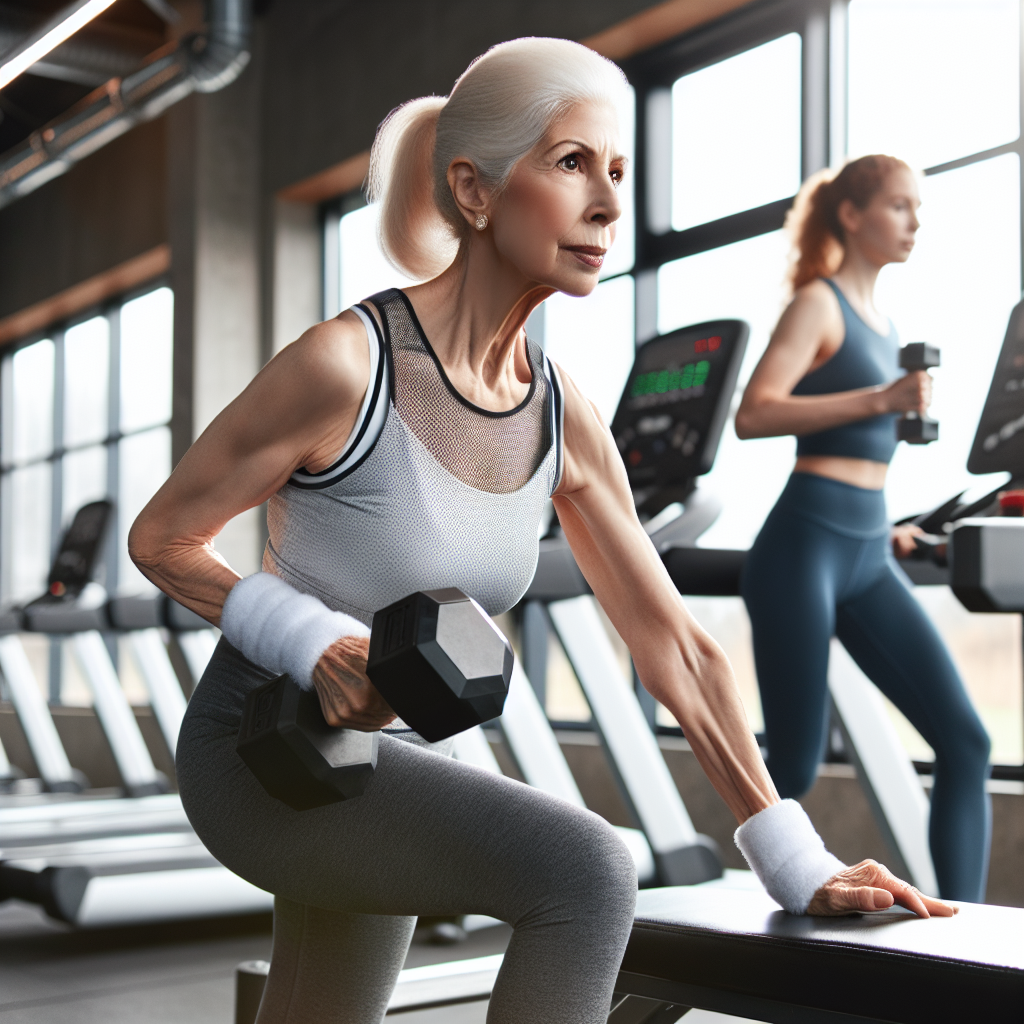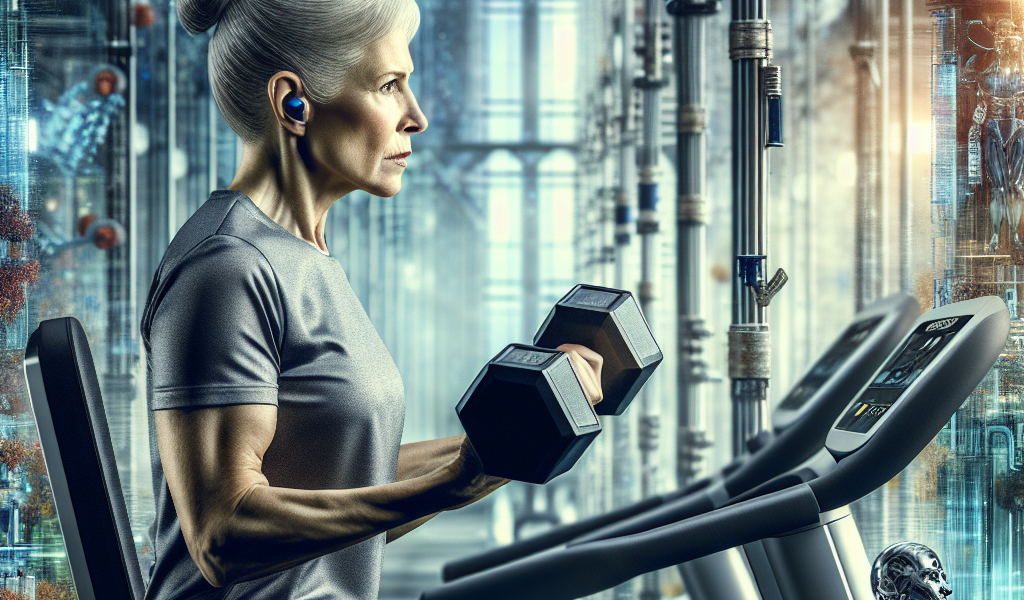A Comprehensive Guide: How to Build Back Muscle Mass After 55
Aging is a natural process, but don’t let it deter you from making the most of your fitness goals. “A Comprehensive Guide: How to Build Back Muscle Mass After 55” provides practical steps for those mature fitness enthusiasts seeking to maintain or even increase their muscular strength as years roll by. The guide addresses the common FAQs, with actionable advice on how to effectively build back muscles even as you age. Don’t let age dictate the vigor and vitality you can still achieve; get ready to unveil the secret to a stronger, healthier you.

Understanding Your Body After 55
Congratulations! You’ve hit the magnificent milestone of 55. You’re energetic, focused and ready to embrace the next chapter of your life. But let’s be real. Your body isn’t exactly what it was 30 years ago, and that’s totally okay! You’re still capable of many incredible things. Let’s explore what makes a 55-year-old body special.
Physiological Changes At 55
Around the age of 55, your body might start to change. As we age, we face an array of physiological changes such as reduced bone mass, flexibility, and cardiovascular function. You might also notice a decrease in strength, stamina, or an increase in body fat. These are all perfectly normal changes that occur with age, so don’t let them discourage you.
Understanding Age-Related Muscle Loss
Let’s talk about muscle loss. Also known as sarcopenia, age-related muscle loss typically begins around the age of 30 and accelerates after 55. It’s a natural biological process, much like greying hair, and it can affect your overall health if not managed well.
Why it’s crucial to build muscle mass after 55
Building muscle mass after 55 is crucial for several reasons. Firstly, it helps to counteract age-related muscle loss and maintains your strength and mobility. It also improves your metabolic health, reducing the risk of weight gain and diabetes. Additionally, it boosts your mood and self-confidence. Remember that it’s never too late to start!
Safety Considerations for Older Adults Trying To Build Muscle
Before jumping into a workout routine, it’s crucial to consider your safety. Let’s take a look at how you can balance your desire to build muscle and your well-being.
Role of A Doctor Consultation
First things first. Consult your doctor before starting a workout regimen. They can advise you of any potential risks and recommend exercises suitable for your health condition.
Identifying existing Health Conditions
As you age, the likelihood of existing health conditions increases. These conditions might influence your capacity to exercise or require specific precautionary measures. Take this into account when planning your fitness regime.
Importance of Warm-Up and Cool-Down exercises
Never underestimate the power of warming up and cooling down! Proper warm-ups prepare your muscles and joints for the exercise ahead and reduce the risk of injury. Similarly, cool-down exercises help your body to return to its normal state and reduce post-exercise stiffness.

The Role of Nutrition in Muscle Building
Nutrition plays a vital role in building and restoring muscle mass. Let’s delve into the nutrients that fuel your muscles.
Understanding Macronutrients For Muscle Growth
Macronutrients, consisting of carbohydrates, protein, and fat, are essential for muscle growth. Carbohydrates provide energy for your workouts, proteins facilitate muscle recovery and growth, and fats support hormone production and absorption of vitamins.
Hydration and its role in muscle building
Staying hydrated is equally important. Water supports multiple bodily functions, including the transportation of nutrients to your muscles and the removal of waste. So remember to sip not only during your workout but also throughout the day.
Implementing a Protein-Rich Diet
A diet rich in protein is particularly crucial for muscle growth. Incorporate various protein sources into your diet such as lean meats, dairy products, eggs, nuts, and legumes.
Importance of Resistance Training in Building Back Muscle
Resistance training can be particularly effective when it comes to building back muscle.
Learning about resistance training
Resistance training involves working your muscles against a force. It encourages muscle growth by causing micro-tears in the muscle fibers, which then repair and grow stronger and larger.
Proper Way to Engage in Resistance Training
To reap the maximum benefits from resistance training, maintain proper form, vary your exercises, gradually increase your load, and give your body time to rest and recover.
Safety Measures while Resistance Training
Always prioritize safety in resistance training. Use proper equipment, don’t lift too heavy weights, and take the time to learn the correct form.

Back muscle Exercises for Individuals Over 55
Here are some exercises that can help you build your back muscles, even over 55.
Standing Resistance Band Back Pull
This exercise targets various muscles in your back and is extremely beginner-friendly. Stand upright, hold a resistance band in front of you with both hands and pull it apart, squeezing your shoulder blades together.
Seated Row Exercise
Seated row exercises can be performed with a resistance band or a rowing machine, and they target the muscles in your upper and middle back.
Dumbbell Deadlifts
This functional exercise targets your lower back, glutes, and hamstrings. Remember to keep your back straight and lift with your legs, not your back.
The Role of Cardiovascular Exercise
While strength training is crucial, cardiovascular exercises shouldn’t be neglected!
Benefits of Cardiovascular Exercise for Muscle Building
Cardiovascular exercises can enhance your muscle-building efforts by improving heart health, increasing blood flow to your muscles, and contributing to fat loss.
Balancing Cardio with Strength training
To strike a balance, consider engaging in low-impact cardio exercises that are gentle on your joints, such as swimming or cycling, on your non-strength training days.
Tips to Include Cardio Exercises in Your Regime
Start small, aim for consistency rather than intensity, and find a type of cardio that you enjoy. This could be anything from walking or biking to dancing!

Understanding the Importance of Rest and Recovery
Rest and recovery are crucial for muscle growth. Without these, you risk injury and might not see the results you want.
Role of Sleep in Muscle Building
Sleep is your body’s recovery period, where it repairs and rebuilds muscles. Therefore, getting enough sleep is essential for muscle growth.
Implementing Rest Days in your Workout Routine
Rest days allow your muscles to repair, recover, and grow. Strive for at least 2 rest days per week.
Understanding the Signs of Overtraining
Overtraining can lead to fatigue, insomnia, decreased performance, and a higher risk of injury. So listen to your body and give it the rest it needs.
Mental Health and Muscle Building
Exercise is not just beneficial for your physical health, but also your mental well-being.
The role of Stress in Muscle Loss
Stress can hinder muscle growth by causing hormonal imbalances and promoting fat storage. It can even cause muscle loss in severe cases.
Techniques to Mitigate Stress
Practices such as mindfulness, meditation, deep breathing, and yoga can help reduce stress levels, thereby supporting your muscle-building journey.
Importance of Consistency and Patience
Rome wasn’t built in a day, and neither is your muscle mass. Stay patient, be consistent with your efforts, and celebrate every progress, no matter how small.

FAQ: Building Back Muscle Mass After 55
Is it possible to build muscle after 55?
Absolutely! While it might require a bit more effort and patience, it’s definitely possible to build muscle after 55.
What exercises are safe for older adults?
Exercises such as walking, swimming, yoga, light weightlifting, and resistance band exercises are typically safe for older adults. However, it’s crucial to consult with your doctor before starting any exercise regimen.
How often should I aim to exercise?
Aim for at least 150 minutes of moderate-intensity or 75 minutes of high-intensity exercise per week. However, remember to listen to your body and adjust your workout routine as needed.
Success Stories and Inspiration
Real-Life Experiences of Muscle Building after 55
There are numerous stories of individuals over 55 who have successfully built muscle. These stories are proof that age is not a barrier to fitness and should serve as an inspiration for all.
Health Improvements Experienced by Older Adults Building Muscle
Building muscle after 55 can lead to numerous health improvements, including better mobility, improved balance, increased stamina, and reduced risk of chronic diseases.
Motivation Techniques and Tips for Continued Success
To stay motivated, set realistic goals, track your progress, involve a workout buddy, or a personal trainer. Most importantly, enjoy the process and celebrate every achievement!
Building back muscle after 55 might seem challenging, but it’s definitely achievable. With patience, perseverance, a well-balanced diet, and a well-rounded workout plan, you can build muscle and improve your health. So roll up your sleeves, it’s time to get strong at any age!

